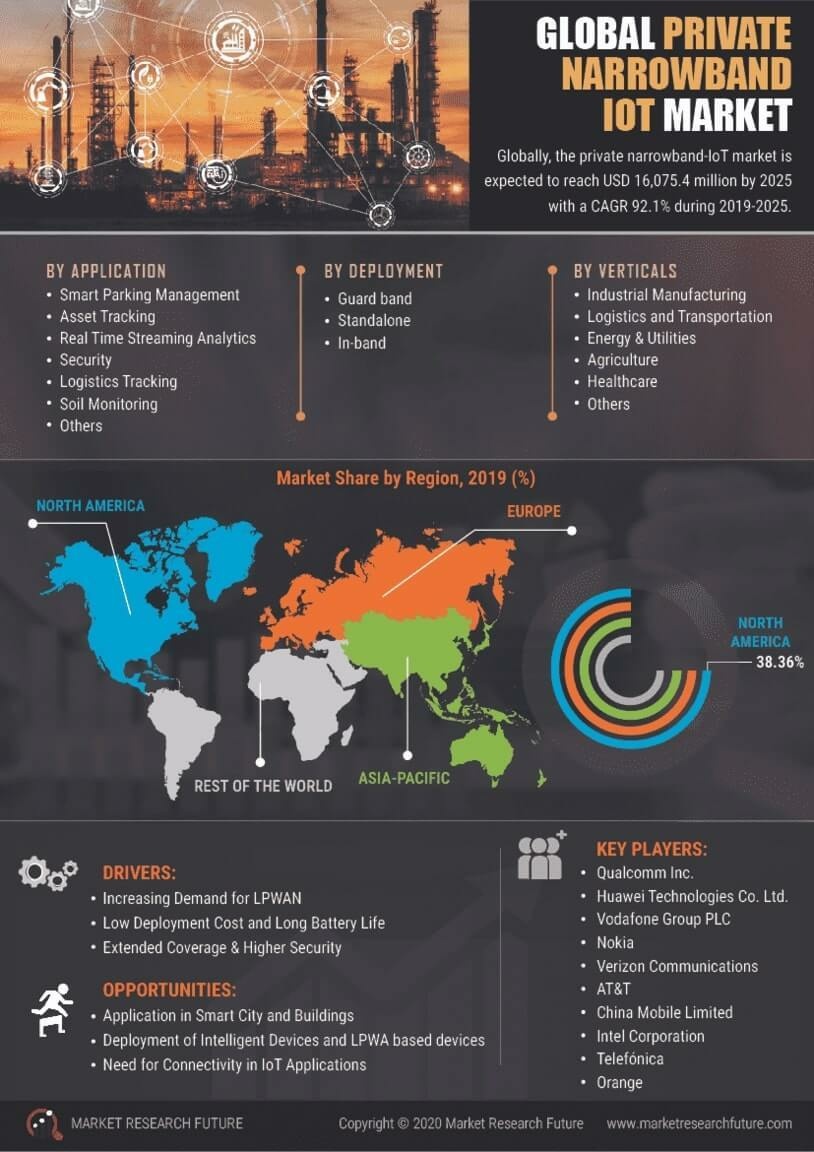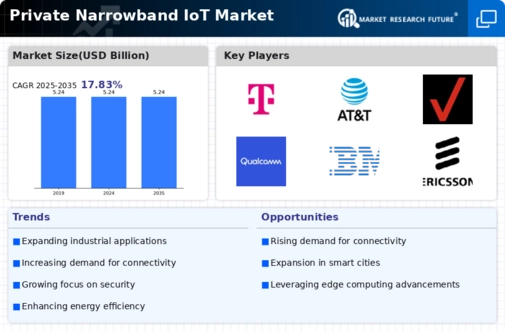Growing Demand for Smart Cities
The Private Narrowband IoT Market is experiencing a surge in demand driven by the increasing focus on smart city initiatives. As urban areas expand, the need for efficient infrastructure management becomes paramount. Private Narrowband IoT Market solutions facilitate real-time monitoring and management of city services, such as waste management, traffic control, and energy consumption. According to recent estimates, the smart city market is projected to reach substantial figures, indicating a robust growth trajectory. This trend suggests that municipalities are likely to invest in Private Narrowband IoT Market technologies to enhance operational efficiency and improve the quality of life for residents. The integration of these technologies into urban planning is expected to create a favorable environment for the Private Narrowband IoT Market, as cities seek innovative solutions to address complex challenges.
Advancements in Sensor Technology
The Private Narrowband IoT Market is witnessing transformative advancements in sensor technology, which are enhancing the capabilities of IoT applications. The development of more sophisticated, cost-effective sensors is enabling a wider range of industries to implement Private Narrowband IoT Market solutions. These sensors facilitate accurate data collection and analysis, which is essential for informed decision-making. As sensor technology continues to evolve, it is expected to drive innovation within the Private Narrowband IoT Market, allowing for more complex applications in areas such as healthcare, agriculture, and logistics. The integration of advanced sensors with Private Narrowband IoT Market networks can lead to improved operational efficiencies and new business models, thereby expanding the market's potential.
Rising Focus on Energy Efficiency
The Private Narrowband IoT Market is increasingly influenced by the rising focus on energy efficiency across various sectors. Organizations are actively seeking solutions that enable them to monitor and manage energy consumption effectively. Private Narrowband IoT Market technologies provide the necessary tools for real-time energy monitoring, predictive maintenance, and optimization of resource usage. This trend is particularly evident in industries such as manufacturing and utilities, where energy costs constitute a significant portion of operational expenses. By leveraging Private Narrowband IoT Market solutions, companies can achieve substantial energy savings and reduce their carbon footprint. The growing emphasis on sustainability is likely to drive the adoption of these technologies, positioning the Private Narrowband IoT Market as a critical component in the transition towards more energy-efficient practices.
Regulatory Support for IoT Deployment
The Private Narrowband IoT Market benefits from increasing regulatory support aimed at promoting IoT deployment across various sectors. Governments are recognizing the potential of IoT technologies to drive economic growth and enhance public services. Initiatives that encourage investment in IoT infrastructure and provide guidelines for secure deployment are likely to foster a conducive environment for the Private Narrowband IoT Market. For instance, regulations that streamline spectrum allocation for IoT applications can significantly enhance network efficiency and reliability. As regulatory frameworks evolve, they may facilitate the adoption of Private Narrowband IoT Market solutions, thereby expanding market opportunities. This supportive landscape is expected to attract investments and drive innovation within the Private Narrowband IoT Market.
Enhanced Connectivity for Remote Operations
The Private Narrowband IoT Market is poised for growth due to the increasing need for enhanced connectivity in remote operations. Industries such as agriculture, mining, and oil and gas are increasingly relying on IoT solutions to monitor equipment and optimize operations in areas with limited connectivity. Private Narrowband IoT Market networks provide reliable communication channels, enabling real-time data transmission and remote monitoring capabilities. This is particularly crucial in sectors where operational efficiency can lead to significant cost savings. As organizations recognize the potential of Private Narrowband IoT Market to streamline processes and improve decision-making, the demand for these solutions is expected to rise. The ability to maintain connectivity in challenging environments positions the Private Narrowband IoT Market as a key player in the evolution of industrial operations.


















Leave a Comment